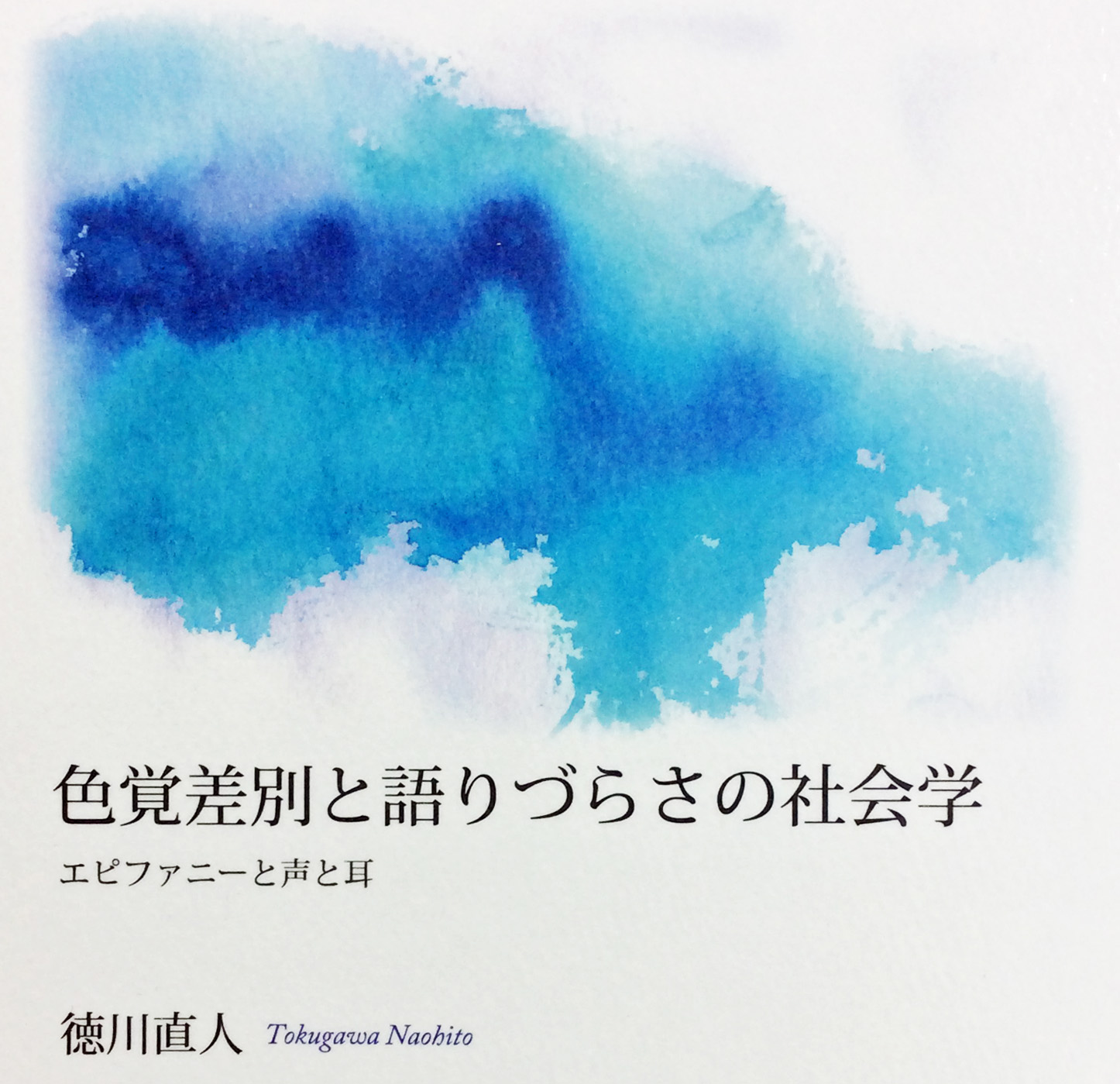徳川直人、2016、『色覚差別と語りづらさの社会学:エピファニーと声と耳』、生活書院
This page contains an outline of a book written by Tokugawa Naohito
Sociology of Color Vision Discrimination and Difficulty to Talk
Sociology of Color Vision Discrimination and Difficulty to Talk: Epiphany, Voice, and Ear
■ Publishers Page
■ Outline
This book is the first social science book on this topic in Japan. The author, Tokugawa Naohito, is a sociologist with symbolic interactionist perspective and one of the color vision minority.
Social model in disability studies and constructionist approach in interaction theory together suggest that the power of medical profession to define particular type of color vision as abnormal has arisen in the middle of 19th century, when mankind has acquired the technology to use color and light as signs or signals in every sphere of social life especially in the mass transportation system. This standardization of vision is a kind of discipline of the body in wider context of modernity.
Moreover, the color vision minority is not those people who cannot see the right answer in the color vision test, but disqualified people who are deprived of language, or of the power to describe their experience, express opinions, and define themselves. Being regarded as unable to be aware of one’s own peculiarity, they are recommended or forced to go under the screening test and seek the way of “better adaptation” to the status qua.
This situation poses a serious problem on the epistemological and methodological ground of the interactionism. If disciplined experience is already dominant among people because of those social forces, the naturalistic presupposition of the “point of view of the actor” easily represents and reinscribe the social structure in question that prohibits and molds the voice.
In this book, the close reading of the text of Dan Ikuma, a famous composer and essayist who confessed on his own experience of color vision deficiency, Ishihara Shinobu, the ophthalmologist who invented the Ishihara test and advocated the self-control by the detected people, as well as other texts, shows not only the deprivation process but also the possibility of alternative talk. Readers are invited to compare the horizons of the logic to each other and become conscious of the relativity of take-it-for-granted attitude in everyday inference about the normal and the abnormal.
Consideration on the response-ability of the listener, or the public ability to listen for, is the important subsidiary of the book, because the voice needs to be listened if it is to exist. It may change the experience of epiphany, that is, the reality disjunction in color vision, into an occasion for conversation of gestures, i.e., the beginning of a significant communication in Mead’s sense, a dialogue in which a responsive ear stimulates the voice and the voice in turn stimulates the ear to respond. It may also arouse an attitude to listen to the untold voice in the self of the listener that is the beginning of a new interaction with oneself.
